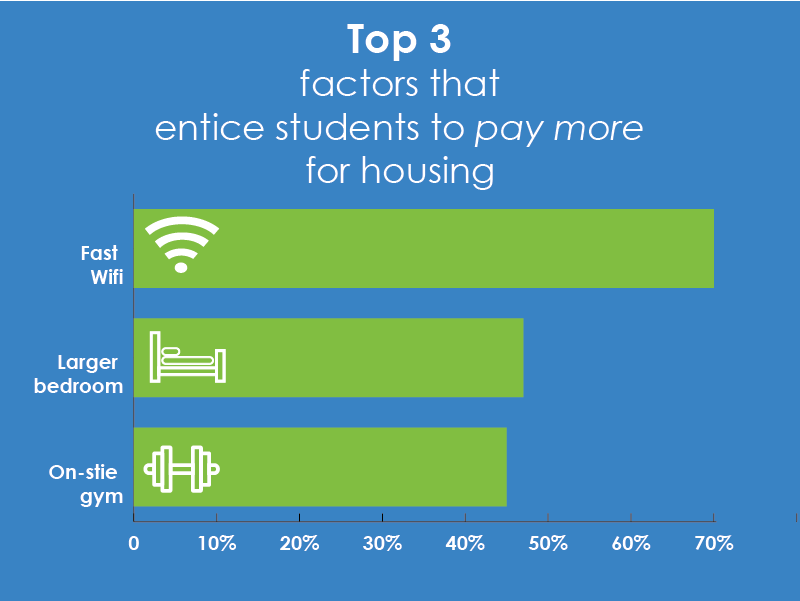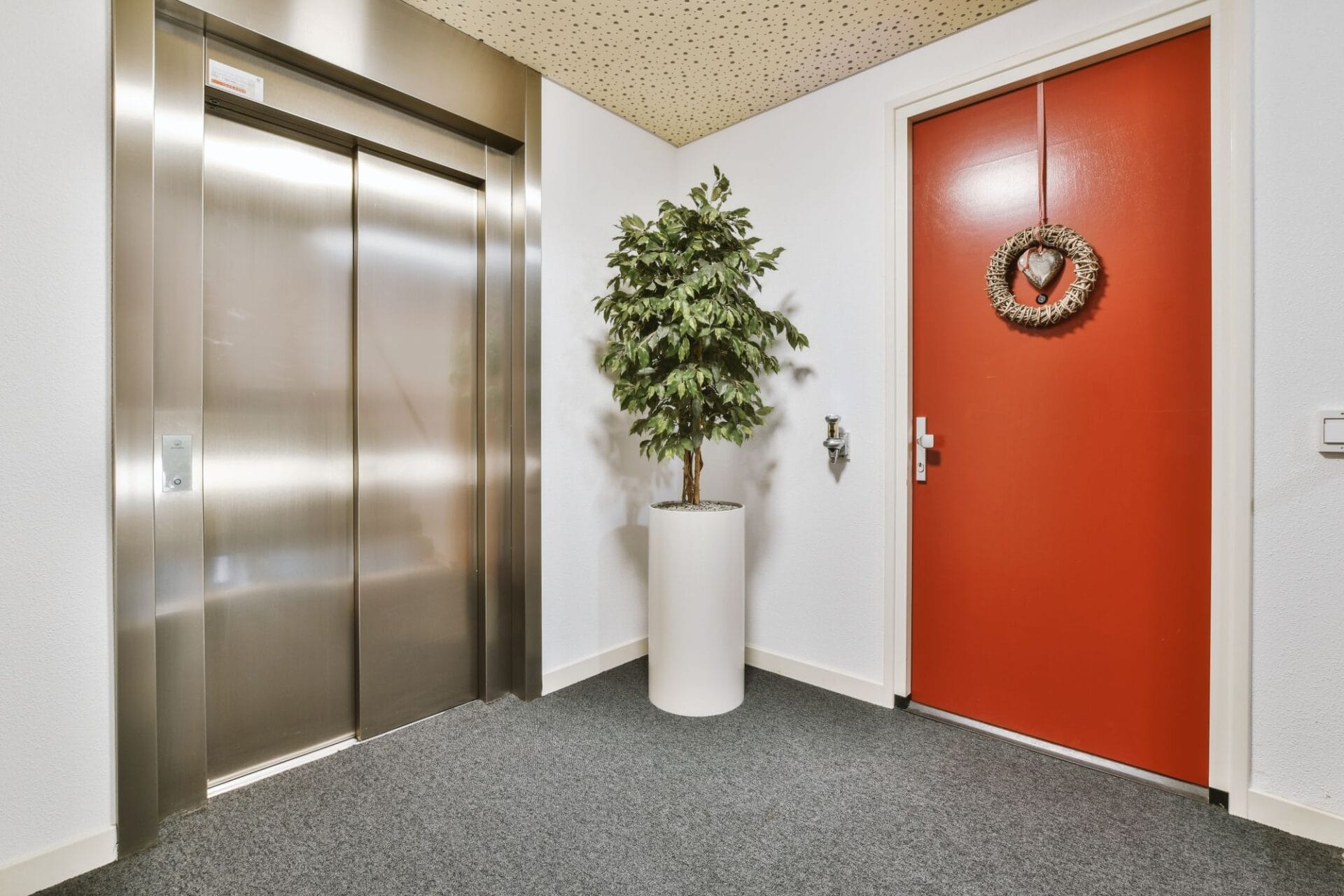The student housing market is often overlooked because it is a niche segment of the real estate industry.Investors may also be wary about the returns they will make from low-income rentals. But, this market is becoming increasingly competitive, and managers that care for these types of properties already understand their potential.
According to Research.com, the vacancy rates of student housing in the U.S. remained considerably low, sitting at 1.7% in 2016 and slightly rising to 2.3% in 2019.
Student accommodations are steadily becoming competitive for a few reasons:
- Developers are slow to create more purpose-built student residences
- University and college enrolment rates continue to rise since more workplaces require some sort of degree
- Federal government grants are helping students who previously could not get financial help through a private bank
While students make choices about where they live based on numerous factors, the overall cost and value for money remain the most significant deciding factors. Unfortunately, nearly 3 million students in university-owned properties described them as mid- to poor-quality accommodations. A strong property manager can help change the student experience though. Young adults shouldn’t be asked to live in sub-par conditions, and many would be willing to pay more for a room that is well maintained.
In this article, we’ll look at the features that students care about most, and how managers can maintain their property values without cutting corners.
The current student housing market
There is a limited supply of both private and purpose-built student residences. However, the demand for more of this type of housing has prompted developers to leverage the potential of the underserved market. Cities should expect to see more purpose-built student residences going up, provided there is space near the school. Students will pay a premium for a room that is less than 10 minutes from campus, but their attitudes change if the housing is more than a mile from campus.
Covid has impacted the education system just as much as anything else. Since many schools switched to online learning for 2020 and 2021, there was a downward trend in college and university enrollments, which means fewer students were looking for accommodations.

It is projected that enrollment will rise when campuses have returned to a more normal state. Studies show that enrollment in degree-granting institutions in the U.S. could hit 19.8 million by 2025. That’s a 2.6 million increase from 2017.
Setting prices
It’s best to set prices that align with the local market. Many bedrooms go for $700 to $800 each, but the city, the size of the living space, the amenities and the proximity to campus will all come into play. Some sources report being able to charge 100% to 200% more in rent for residences that are across the street from campus!
Looking at the U.S. as a whole, properties that were less than a half-mile from campus had a rental rate of $749 per bed in 2018, which is a 1.7% increase from the 2017 average. But purpose-built student accommodations that were further than one mile from campus only experienced a 0.8% increase in rental rates from 2017 to 2018.
Most students want one or two roommates. Some students are willing to live with three people if it makes more financial sense for them.
When it comes to perks and amenities, students will prioritize fast internet over anything else. After all, they need it to work—and work well—at all times. Students said they would also pay more for a larger bedroom, an onsite gym, security and a comfier bed.

How to become a more effective manager
Caring for students and student housing is all about balance. You must take steps to protect the value of your property, but you also need to give your young tenants the freedom to enjoy their college experience.
Establishing fair rules, conducting regular inspections and keeping in contact with your tenants will help you achieve this balance so that you can generate revenue and position yourself as a preferred property manager.
1. Set clear rules and expectations
Before any contracts are signed or agreements are made, give prospective tenants the opportunity to review all of your property rules. The rules—along with the repercussions for breaking them—should be in writing. This way, renters can decide if these are rules that they want to follow before they sign a lease. Encourage students to ask questions about parties, smoking, etc., so that they have all the information they need to make the best decision for them.
2. Include damage and cleaning charges
Create a chart or table detailing the costs that will be charged to students if they lose a key, damage a window screen or leave a ton of garbage behind after moveout day.
Click here to see an example of the prices set by a university.
3. Insist on a deposit fee
Managers that care for student housing should collect a deposit fee from younger renters. While no one plans to stain a rug or put a hole in the wall, accidents do happen. Deposit fees discourage students from doing things that could damage the property. If the money is needed, you can make the repair without having to dip into your own funds.
Keep in mind that there are limits to how much you can charge. In California, for example, you can only legally charge twice the monthly rent for an unfurnished unit, and three times the monthly rent for a furnished unit.
4. Communicate often
Since many of your residents may be new to renting, they might have a lot of questions for you (some may have never had to do laundry before now). Student renters generally need more guidance, including payment reminders and how to submit maintenance requests. Develop an open dialogue with these young adults and encourage them to communicate with you or your team. They will probably prefer to communicate via text, but if that isn’t the best option for you, ask them to send emails.
By reassuring your tenants that you are there to help, they’re more likely to take proactive steps to keep the home in good condition.
5. Leverage technology
Speaking of digital communications, managers and tenants would both benefit from having access to a property management platform like Condo Control. Managers can share announcements instantly, post the rules and their contact information in a resource library, store emergency contact information for the tenants and much more. Tenants can pay rent and submit service requests online. Giving students access to a resident portal is a great way to encourage timely payments and augment the tenant experience.
6. Offer one-year leases
Most students living away from their parents’ homes will return in the summer. That means they’d rather pay for a nine-month lease since they won’t be around for the other three. The problem is, you wouldn’t be making much money (if any) between June and August, and that can seriously impact your cash flow. By asking tenants to sign a one-year lease, you ensure that your revenue stream doesn’t dry out during the summer.
Similarly, if the tenant is not a good fit, you can end your relationship with them after the school year comes to an end.
You should be clear about any subletting rules you have before the students sign a lease agreement. They may try to get someone else to take over the lease after May so that they aren’t losing so much money in the summer months. If they know you’re okay with this type of arrangement, they’ll be more transparent with you about who will be living in the home when they’re gone.
7. Always get tenants to sign a joint lease
A joint lease is a lease where each tenant is fully responsible for all terms of the lease. So, if a student ends up dropping out of school, decides to go home, and stops paying rent, the remaining roommates will be required to split the full amount of rent between them. That also means that if you post a notice that only one tenant reads, it is legally the same as all of the tenants seeing it.
8. Prepare to get co-signers on board
Some applicants may be first-time renters. That means they don’t have any former landlords who they can list as references (other than their parents). They probably won’t have much credit history either. You can ask a parent to co-sign the lease so that you have greater assurance that rent will be paid on time.
9. Partner with a local business
This isn’t mandatory, but it’s a creative idea to make yourself more attractive as a landlord and help support local businesses, too. Work with a pizzeria, coffee shop, pharmacy, or other store where students would visit often. They can probably offer students a small discount if they mention that they live on your property. Include coupons, samples or advertisements in your welcome packets to establish the connection between the students and the businesses at the beginning of the academic year.























